jmpreiks
Well-Known Member
Just wanted to share a few pics of my counterflow wort chiller build that I did this past weekend. Hopefully it will inspire some more people to make them.  Thanks to Tiber_Brew for my inspiration! https://www.homebrewtalk.com/showthread.php?t=182236
Thanks to Tiber_Brew for my inspiration! https://www.homebrewtalk.com/showthread.php?t=182236
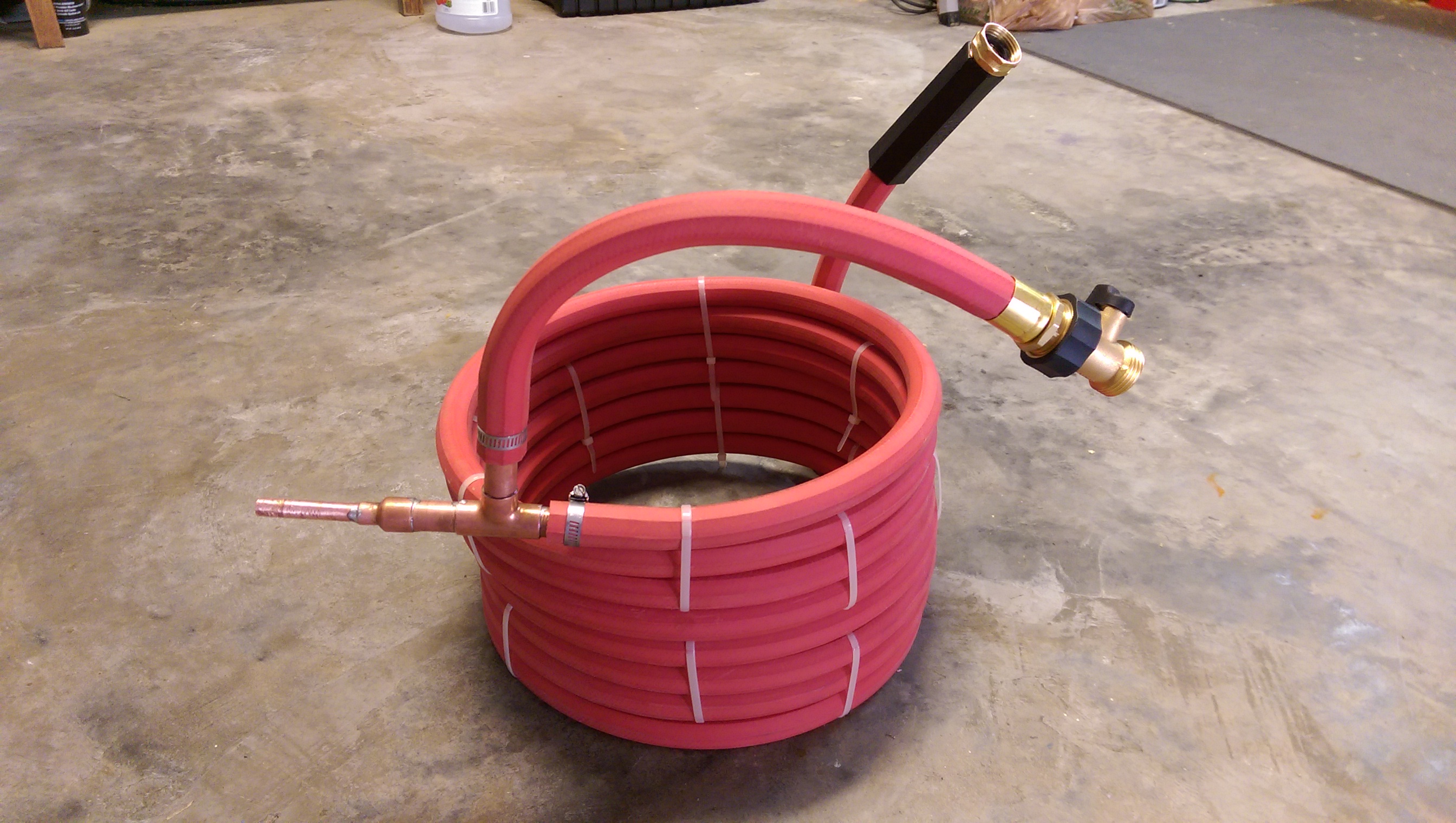
Uncoiled the 25' of 3/8" O.D. copper tubing (http://www.amazon.com/gp/product/B001AH8HDO/?tag=skimlinks_replacement-20):
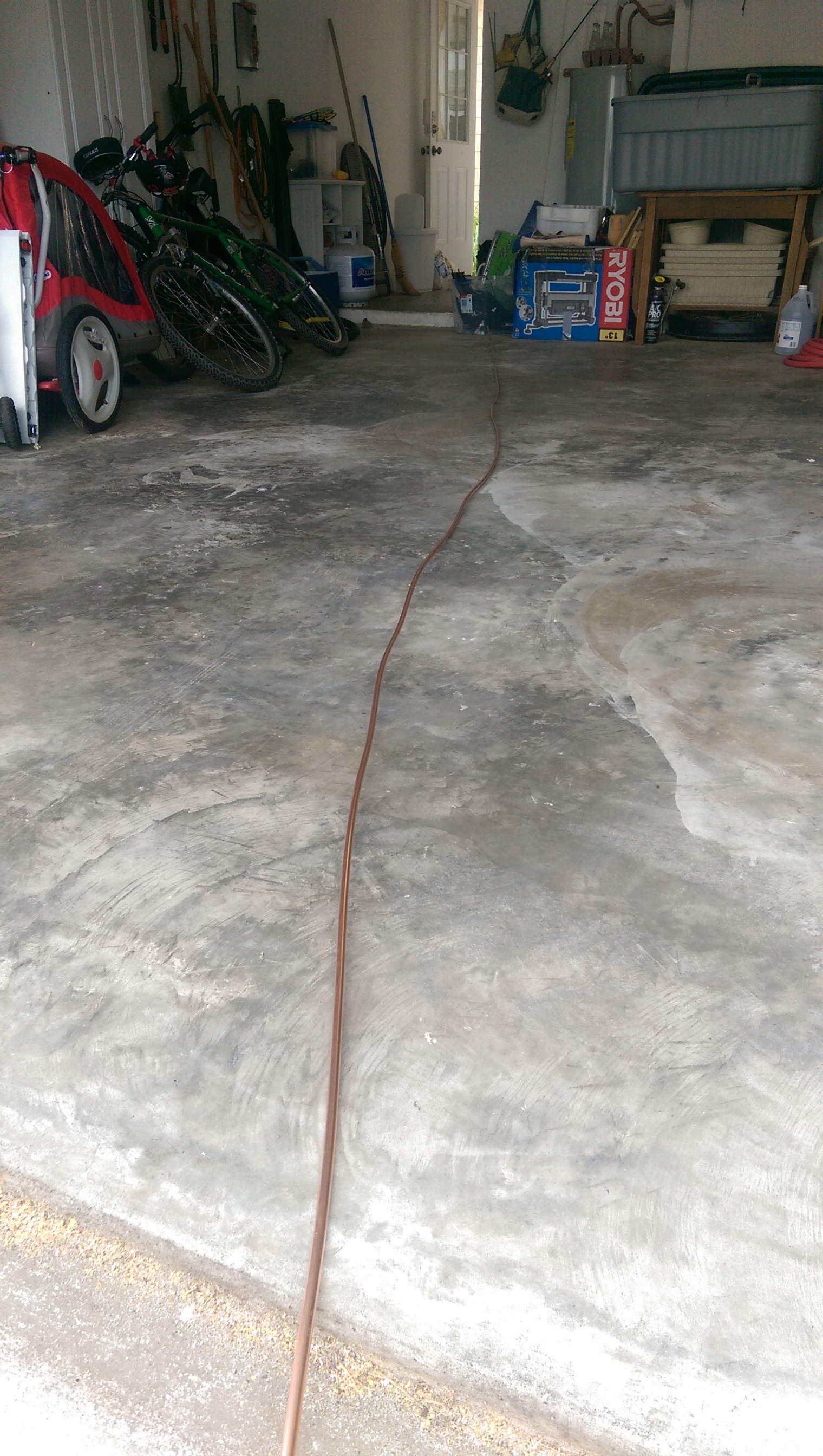
Spot soldered on a spiral of 20 gauge copper wire (http://www.amazon.com/gp/product/B000WC8ULM/?tag=skimlinks_replacement-20), this adds turbulence to the flow to increase heat transfer:
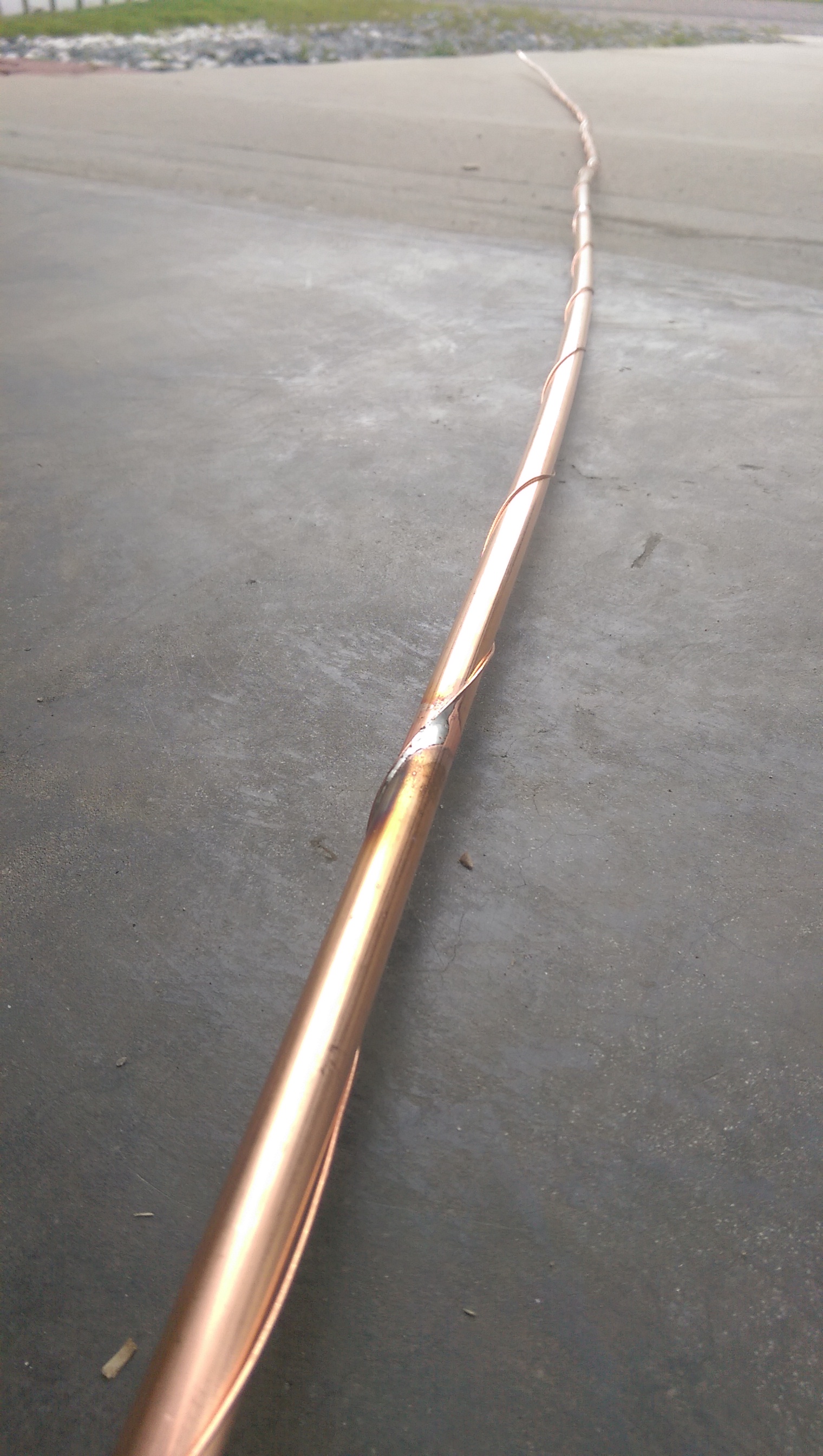
Cut off the ends of a 25' high temp rubber hose (http://www.amazon.com/gp/product/B00002N8OW/?tag=skimlinks_replacement-20):
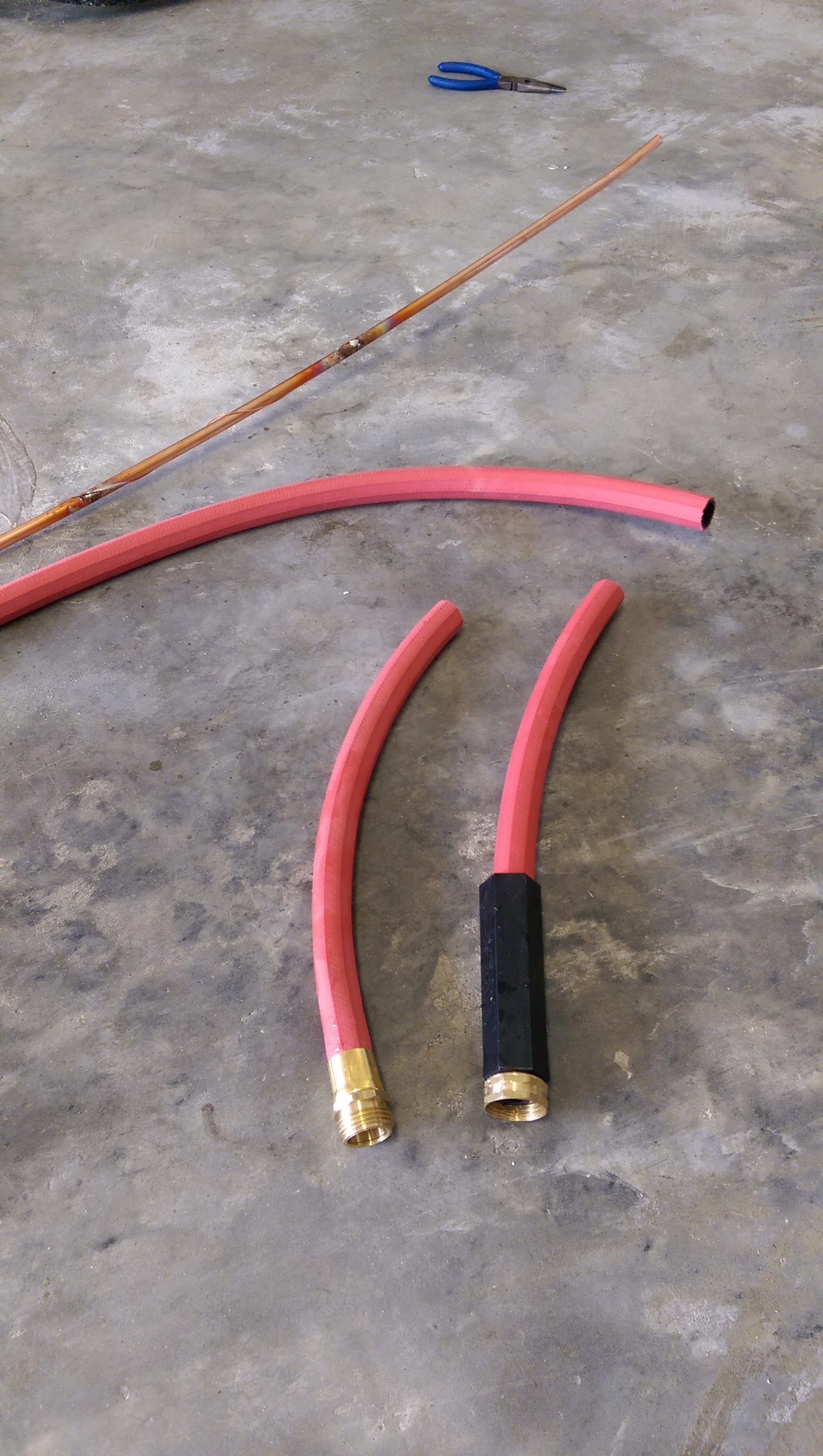
Slid the tubing into the hose with a little soapy water:
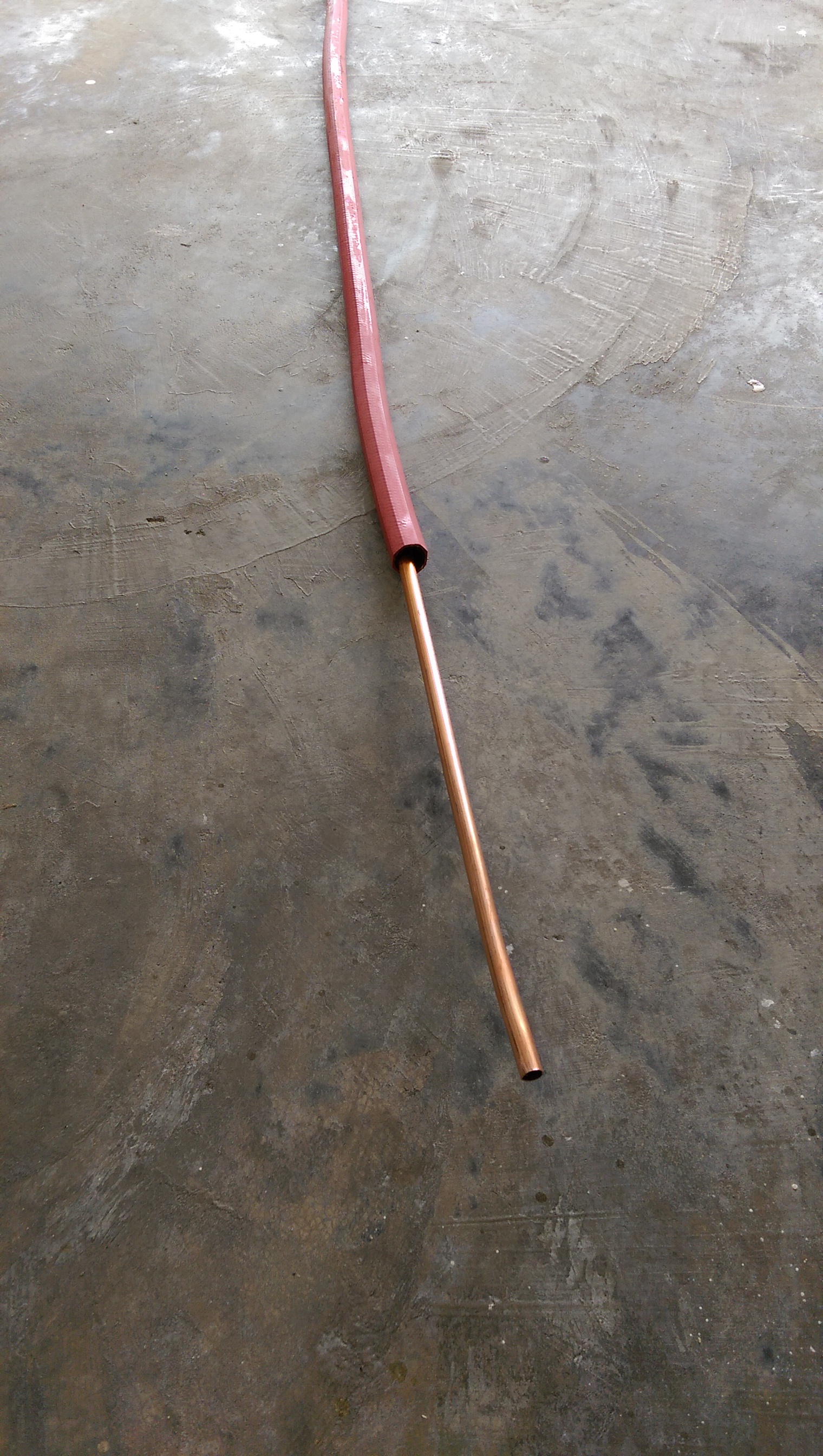
Filled the tubing with water and crimped the ends to avoid kinking the tubing:
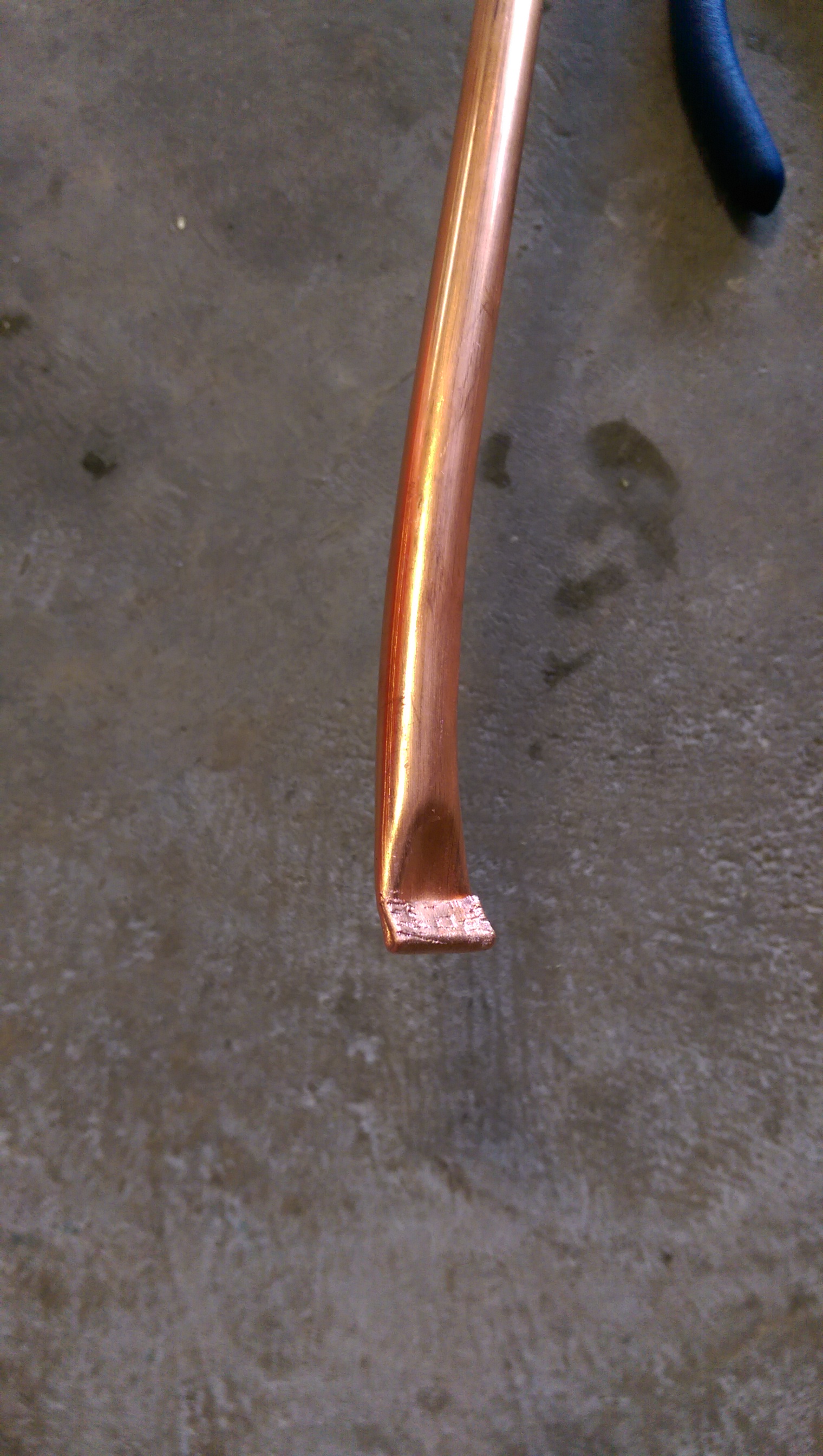
Rolled 5 gal bucket & hose along the floor to get a nice coil:
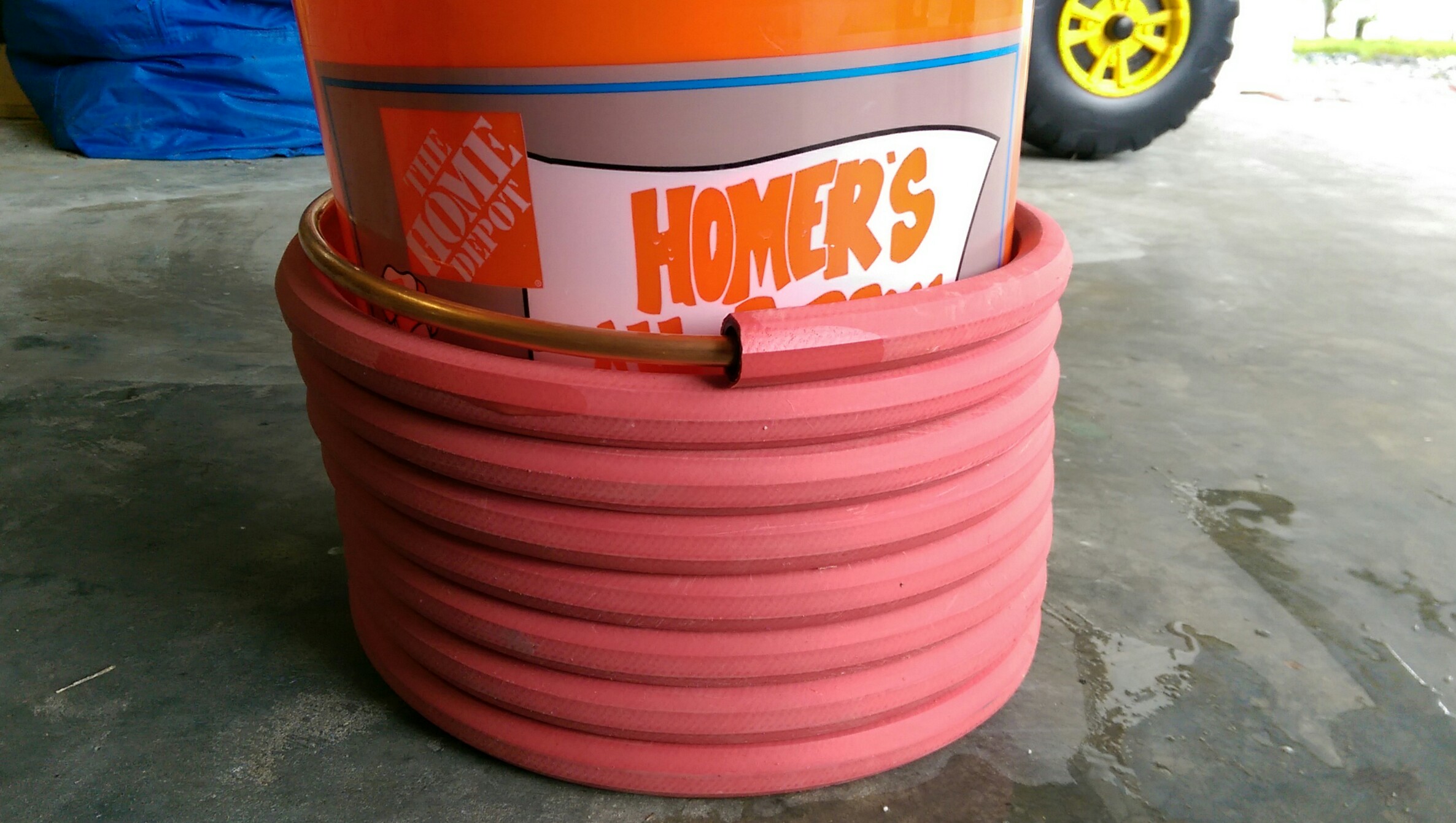
Added some zip ties (super cheap at Harbor Freight) to keep it together. I actually added more after this too:
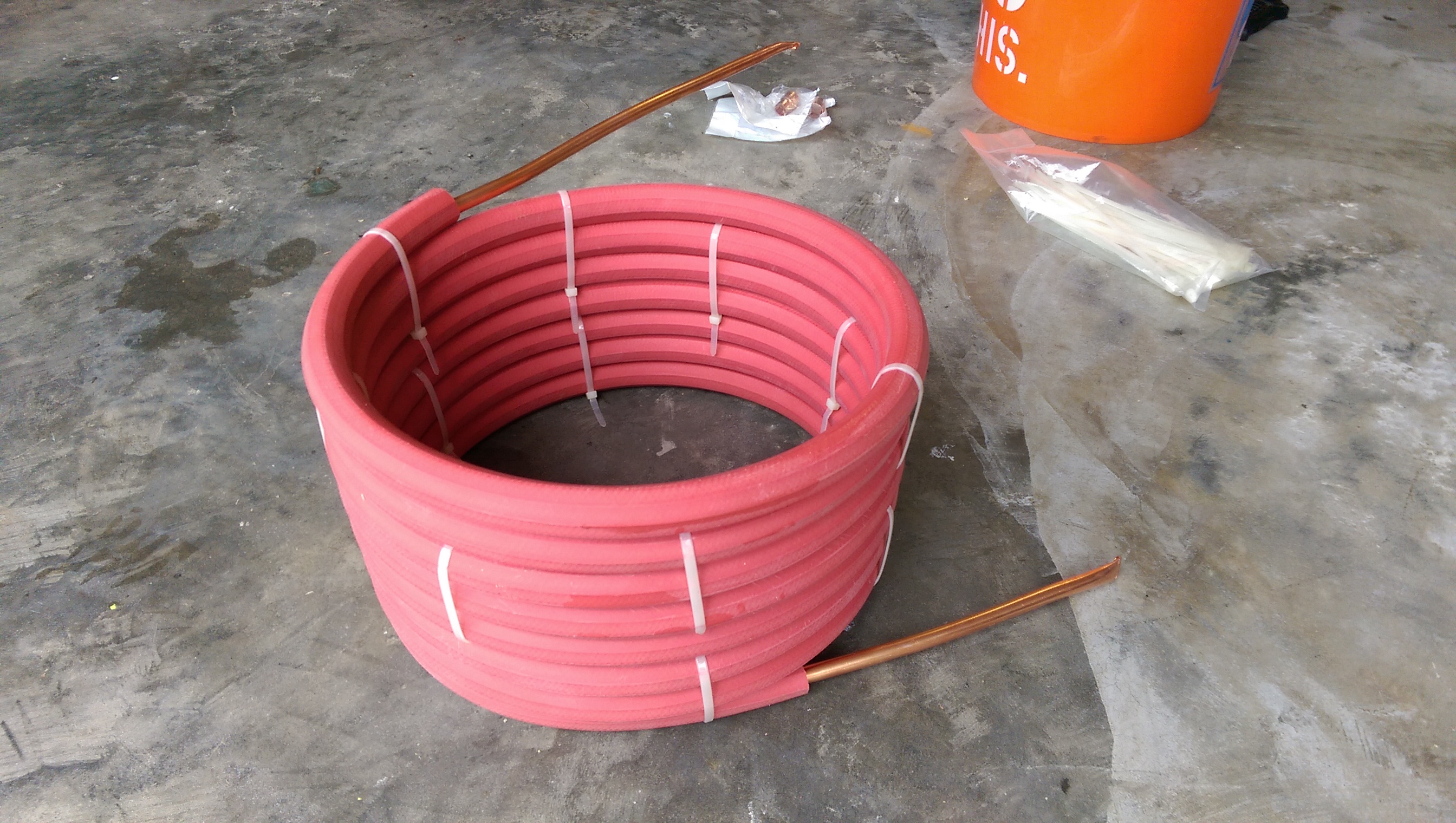
Cut some 1/2" tubing to size and laid out the parts. Note that since the copper tubing coil is 3/8" O.D. (outside diameter) while copper pipe is measured as I.D. (inside diameter), you actually need 1/2" x 1/4" reducing couplings to fit the 3/8" O.D. coil! (http://www.lowes.com/pd_22603-137-CL600_0__?productId=3514682):
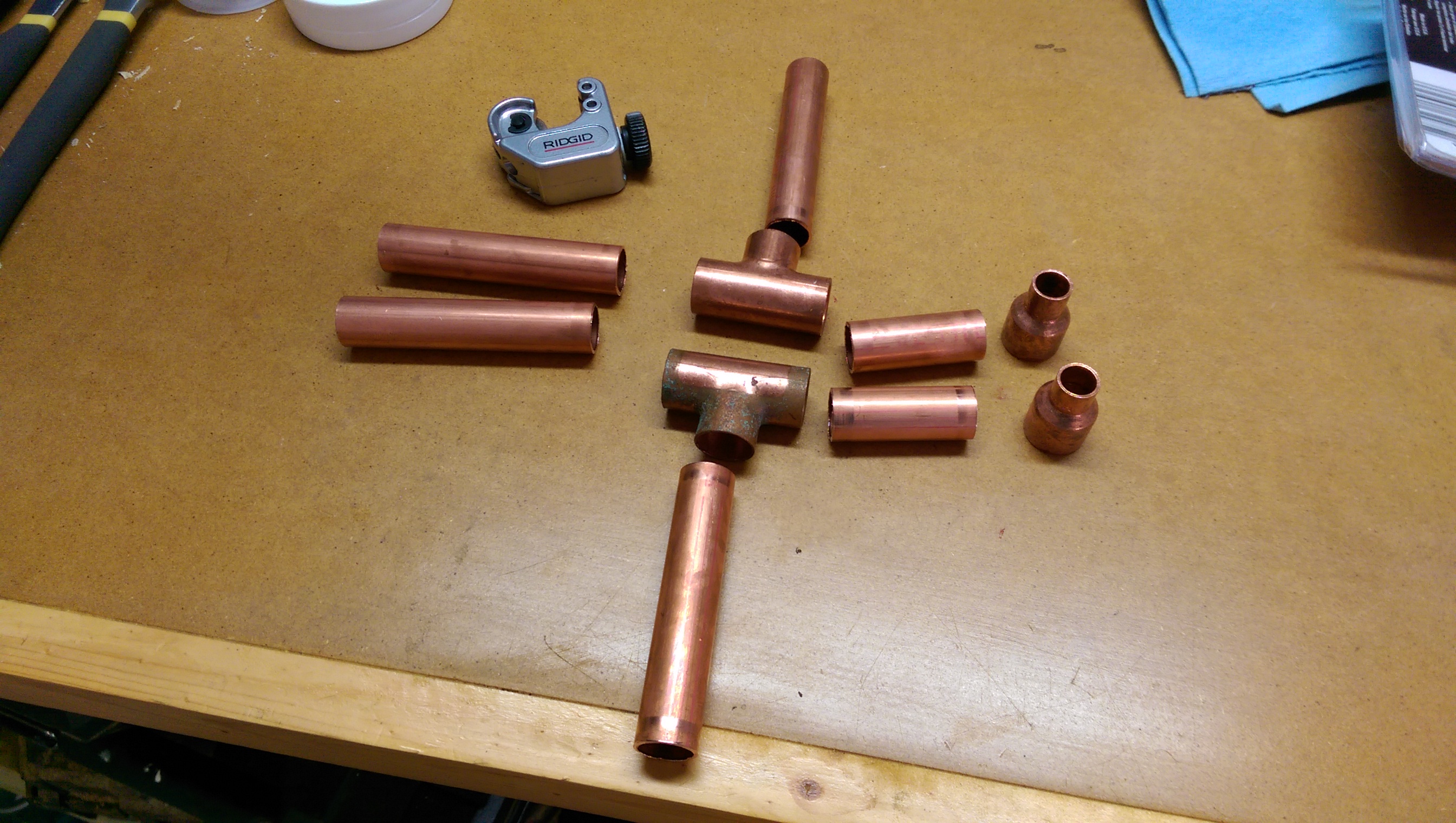
Soldered it up with a glove protecting my nice wooden vice:
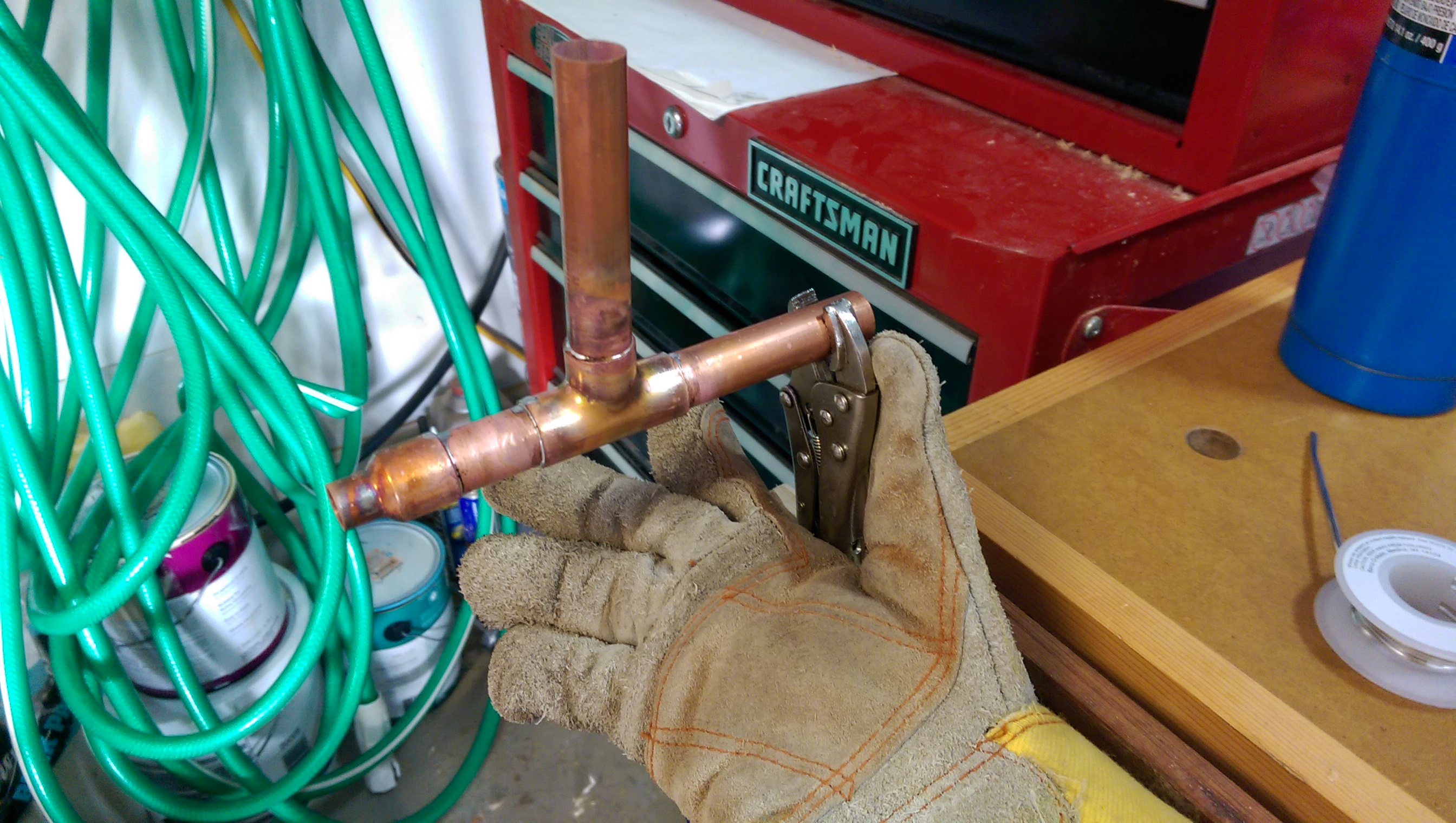
I used a bit too much solder on some of the joints, but I am a newbie at that:
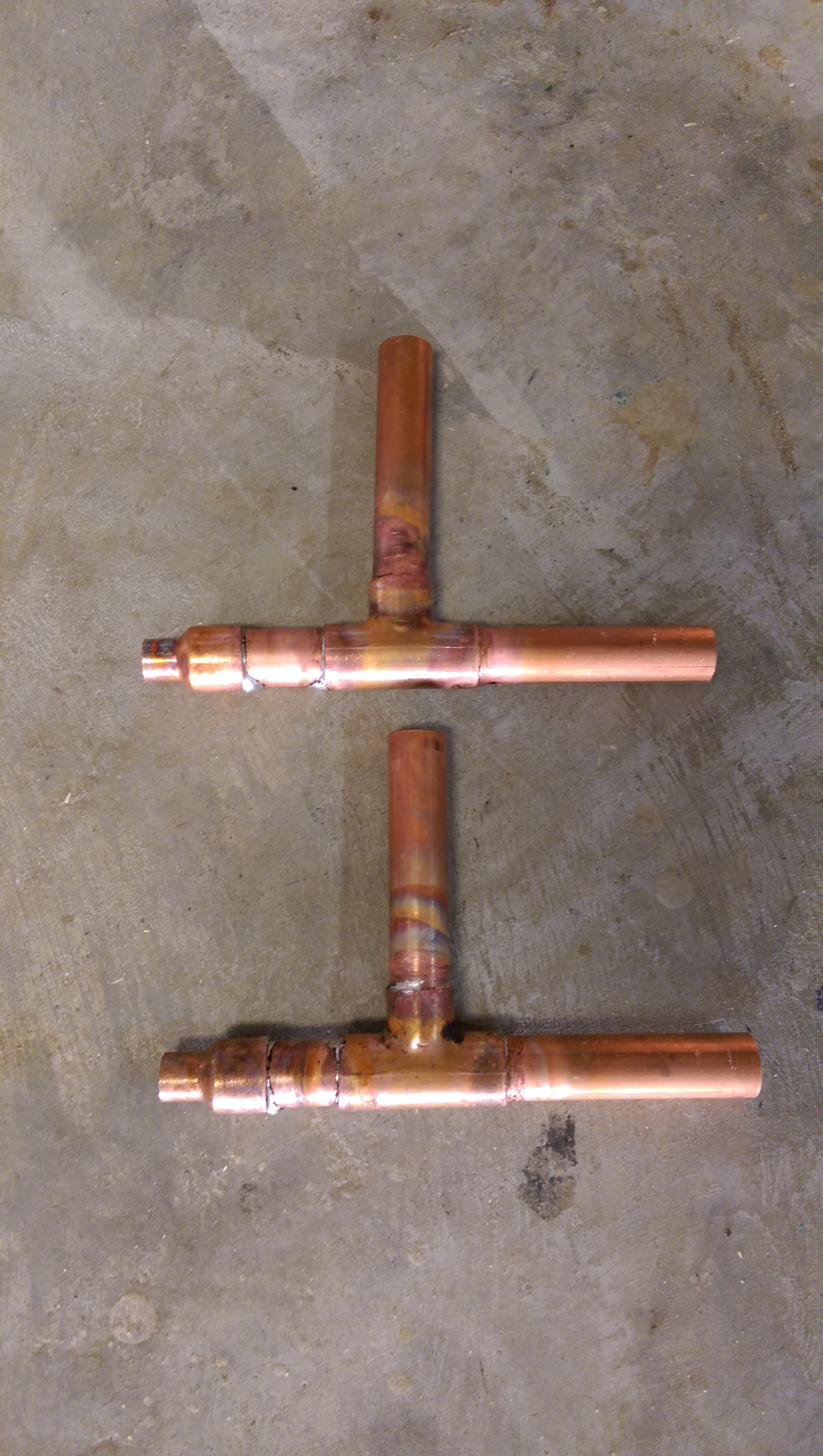
It was actually rather difficult to get the fittings into the hose while getting the copper tubing through it. I had to first drill out the reducers with a 3/8 bit to remove the internal stop, then file the inside a bunch more, and then sand down the outside of the tubing until it slid in smoothly. If it didn't slide really smoothly, it tended to just push the tubing inside the hose instead of through the reducer. Remember to add flux inside the reducer before sliding it on so you can get a good soldered connection.
Stainless hose clamps: http://www.amazon.com/gp/product/B001HWGMBG/?tag=skimlinks_replacement-20
Shutoff valve on the outlet side to control water flow: http://www.amazon.com/gp/product/B0006U66B6/?tag=skimlinks_replacement-20
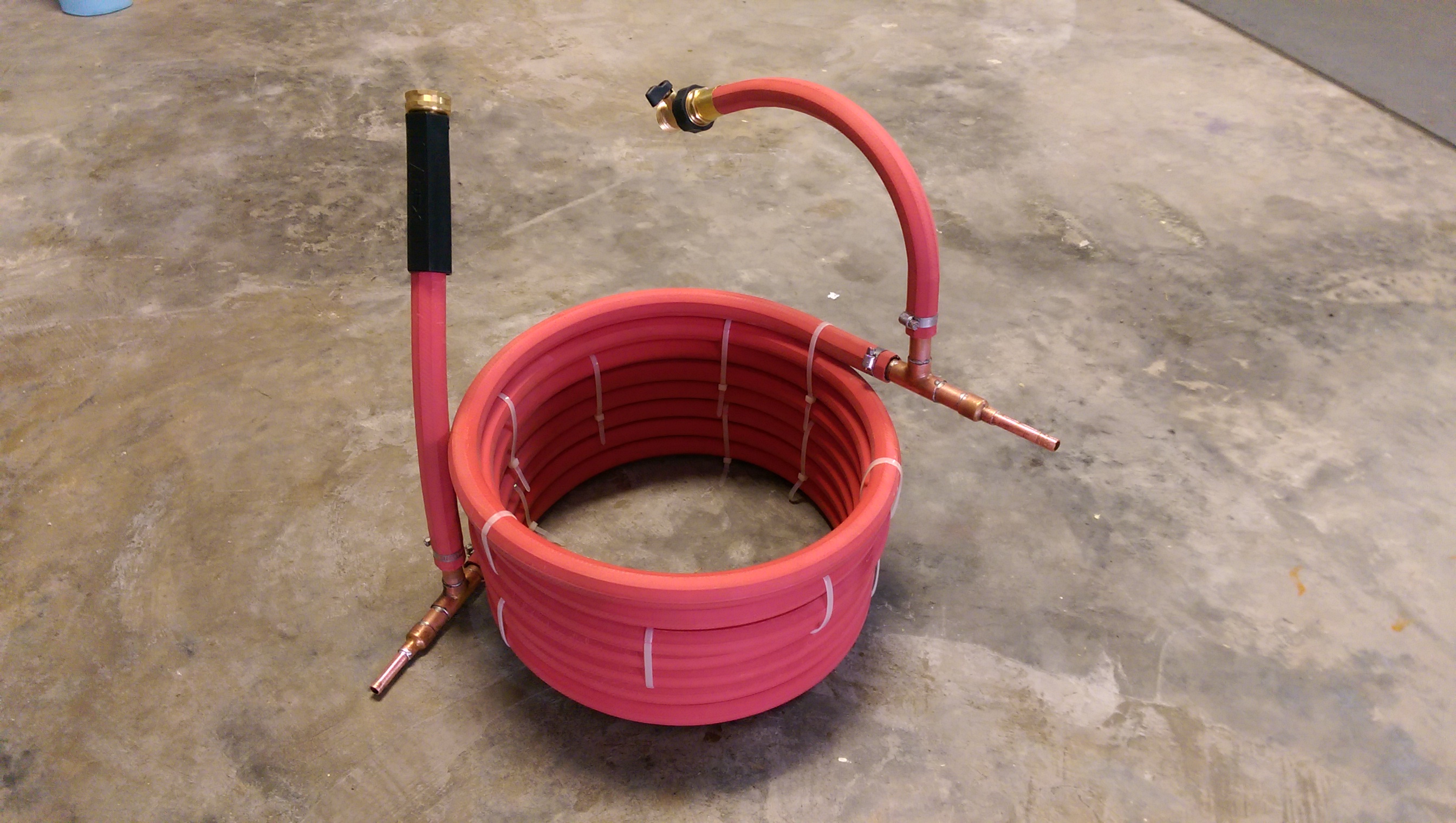

Uncoiled the 25' of 3/8" O.D. copper tubing (http://www.amazon.com/gp/product/B001AH8HDO/?tag=skimlinks_replacement-20):

Spot soldered on a spiral of 20 gauge copper wire (http://www.amazon.com/gp/product/B000WC8ULM/?tag=skimlinks_replacement-20), this adds turbulence to the flow to increase heat transfer:

Cut off the ends of a 25' high temp rubber hose (http://www.amazon.com/gp/product/B00002N8OW/?tag=skimlinks_replacement-20):

Slid the tubing into the hose with a little soapy water:

Filled the tubing with water and crimped the ends to avoid kinking the tubing:

Rolled 5 gal bucket & hose along the floor to get a nice coil:

Added some zip ties (super cheap at Harbor Freight) to keep it together. I actually added more after this too:

Cut some 1/2" tubing to size and laid out the parts. Note that since the copper tubing coil is 3/8" O.D. (outside diameter) while copper pipe is measured as I.D. (inside diameter), you actually need 1/2" x 1/4" reducing couplings to fit the 3/8" O.D. coil! (http://www.lowes.com/pd_22603-137-CL600_0__?productId=3514682):

Soldered it up with a glove protecting my nice wooden vice:

I used a bit too much solder on some of the joints, but I am a newbie at that:

It was actually rather difficult to get the fittings into the hose while getting the copper tubing through it. I had to first drill out the reducers with a 3/8 bit to remove the internal stop, then file the inside a bunch more, and then sand down the outside of the tubing until it slid in smoothly. If it didn't slide really smoothly, it tended to just push the tubing inside the hose instead of through the reducer. Remember to add flux inside the reducer before sliding it on so you can get a good soldered connection.
Stainless hose clamps: http://www.amazon.com/gp/product/B001HWGMBG/?tag=skimlinks_replacement-20
Shutoff valve on the outlet side to control water flow: http://www.amazon.com/gp/product/B0006U66B6/?tag=skimlinks_replacement-20

Last edited by a moderator:







![Craft A Brew - Safale S-04 Dry Yeast - Fermentis - English Ale Dry Yeast - For English and American Ales and Hard Apple Ciders - Ingredients for Home Brewing - Beer Making Supplies - [1 Pack]](https://m.media-amazon.com/images/I/41fVGNh6JfL._SL500_.jpg)


















































